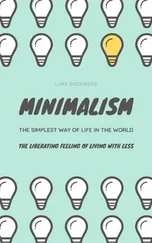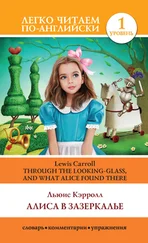I. The use of the same word to denote colors which, according to us, are essentially different.
II. The description of the same object under epithets of color fundamentally disagreeing one from the other.
III. The slight use of color, and its absence in certain cases where we might confidently expect it.
IV. The vast predominance of the most crude and elemental forms of color, black and white, over every other.
V. The small size of Homer’s color vocabulary.
He then proceeded to support these points with over thirty pages of examples, of which I will quote just a few. Consider first what other objects Homer describes as having the appearance of wine. Except for the sea, the only other thing that Homer calls “wine-looking” is… oxen. And none of the critics’ philological somersaults could turn over Gladstone’s simple conclusion: “There is no small difficulty in combining these two uses by reference to the idea of a common colour. The sea is blue, gray, or green. Oxen are black, bay, or brown.”
Or what is one to make of the flower name “violet” ( ioeis ), which Homer uses as a designation for the color of… the sea. (Homer’s phrase ioeidea ponton is variously translated-according to the translator’s muse-as the “violet sea,” the “purple ocean,” or the “violet-colored deep.”) And is it also poetic license that allows Homer to use the same flower to describe the sheep in the cave of the Cyclops as “beautiful and large, with thick violet wool”? Presumably, what Homer was referring to were black sheep as opposed to white ones, and it may be granted that “black sheep” are not really black but actually very dark brown. But violet? Or what about another place in the Iliad , where Homer applies the term “violet” to describe iron? And if the violet seas, violet sheep, and violet iron are all to be written off as poetic licenses, then what about a different passage, where Homer compares Odysseus’s dark hair to the color of the hyacinth?
Homer’s use of the word chlôros is no less peculiar. In later stages of Greek, chlôros just means “green” (and it is this meaning that has inspired familiar terms in the language of science, such as the pigment chlorophyll and the greenish gas chlorine). But Homer employs the word in a variety of senses that don’t seem to suit greenness very comfortably. Most often, chlôros appears as a description of faces pale with fear. While this could merely be a metaphor, chlôros is also used for fresh twigs and for the olive wood club of the Cyclops. Both twigs and olive wood would strike us today as brown or gray, but with a bit of goodwill we might still give Homer the benefit of the doubt here. This goodwill is stretched to the limit, however, when Homer uses the same word to describe honey. Hands up, anyone who has ever seen green honey.
But Gladstone’s circle of evidence is only just beginning. His second point is that Homer often describes the same object with incompatible color terms. Iron, for instance, is said to be “violet” in one passage, “gray” elsewhere, and in yet another place it is referred to as aithôn , a term otherwise used to refer to the color of horses, lions, and oxen.
Gladstone’s next point is how remarkably colorless Homer’s vibrant verse is. Flick through anthologies of modern poetry, and color stares you in the eye. Is there a self-respecting poet who has not drawn inspiration from “the green fields and from yon azure sky”? Whose verse has not celebrated that time of year “when daisies pied and violets blue and lady-smocks all silver white, and cuckoo-buds of yellow hue do paint the meadows with delight”? Goethe wrote that no one can be insensitive to the appeal of the colors that are spread out over the whole of visible nature. But Homer, it appears, was precisely that. Take his descriptions of horses. For us, Gladstone explains, “colour is in horses a thing so prominent that it seems, whenever they are at all individualized, almost to force itself into the description. It is most singular that, though Homer so loved the horse that he is never weary of using him with his whole heart for the purposes of poetry, yet in all his animated and beautiful descriptions of this animal, colour should be so little prominent.” Homer’s silence on the color of the sky shouts even louder. Here, says Gladstone, “Homer had before him the most perfect example of blue. Yet he never once so describes the sky. His sky is starry, or broad, or great, or iron, or copper; but it is never blue.”
It is not as if Homer was uninterested in nature: he is, after all, fabled as an acute observer of the world and admired for his vivid similes with elaborate descriptions of animals and natural phenomena. The marching of the warriors to the place of gathering, for example, is likened to “the tribes of thronging bees that go forth from some hollow rock, ever coming on afresh, and in clusters over the flowers of spring fly in throngs, some here, some there.” The groups of soldiers pouring noisily onto the plain are said to be “as the many tribes of winged fowl, wild geese or cranes or long-necked swans on the Asian mead by the streams of Caystrius, [which] fly this way and that, glorying in their strength of wing, and with loud cries settle ever onwards, and the mead resounds.” Homer had an especially keen eye for the play of light, for anything that shimmers, glints, and glitters: “As obliterating fire lights up a vast forest, along the crests of a mountain, and the flare shows far off, so-as [the soldiers] marched-the gleam went dazzling from the magnificent bronze all about through the upper air to the heavens.” Since Homer’s similes are so rich in the use of all sensible imagery, says Gladstone, we might have expected to find color a frequent and prominent ingredient in them. And yet his poppies may have “their head aslant, laden with seed and with the rain of spring,” but there is never so much as a hint of scarlet. His spring flowers may be a multitude in the field, but their color is not revealed. His fields may be “well-grown of wheat” or “new moistened with rain in summer-time,” but their hue is not divulged. His hills may be “woody” and his woods may be “thick” or “dark” or “shady,” but they are not green.
Gladstone’s fourth point is the vast predominance of the “most crude and elemental forms of color”-black and white-over every other. He counts that Homer uses the adjective melas (black) about 170 times in the poems, and this does not even include instances of the corresponding verb “to grow black,” as when the sea is described as “blackening beneath the ripple of the West Wind that is newly risen.” Words meaning “white” appear around 100 times. In contrast to this abundance, the word eruthros (red) appears thirteen times, xanthos (yellow) is hardly found ten times, ioeis (violet) six times, and other colors even less often.
Finally, Gladstone rummages through the Homeric poems in search of what is not there and discovers that even some of the elementary primary colors, which, as he puts it, “have been determined for us by Nature,” make no appearance at all. Most striking is the lack of any word that could be taken to mean “blue.” The word kuaneos , which in later stages of Greek meant blue, does make an appearance in the poems, but it must have just meant “dark” for Homer, because he uses it for neither the sky nor the sea, only to describe the eyebrows of Zeus, the hair of Hector, or a dark cloud. Green is hardly mentioned either, for the word chlôros is used mostly for non-green things, and yet there is no other word in the poems that can be supposed to represent this commonest of colors. And there doesn’t seem to be anything equivalent to our orange or pink in Homer’s entire color palette.
Читать дальше











